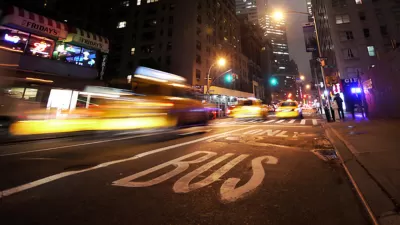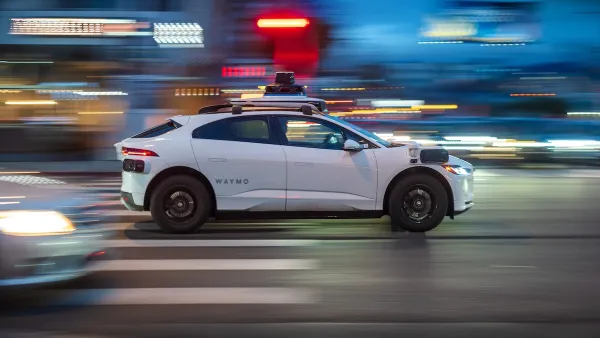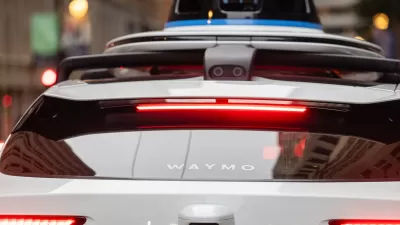Rebecca Solnit writes a pointed criticism of the wave of optimism attached to the self-driving car. Her preference: public transit.

Renowned author Rebecca Solnit begins an editorial for The Guardian by describing a utopian scene with a surprising (to some) setting:
I am rich beyond Google’s wildest driverless-car dreams; I own a fleet of swift and reliable driverless cars that take me where I’m going while I read or stare out the window or watch beautifully limber kids turf dancing in the aisles for my entertainment. I have been riding these liberating transportation marvels for many decades; I have seen the future; it is all of us in these driverless cars we already own together.
Solnit doesn't mean driverless cars in the way Google or Uber does, but she does mean one human driver "per 50 or 500 people"—otherwise known as buses, streetcars, trains, and ferries. According to Solnit, public transit means many city dwellers can afford to skip cars altogether.
Yet with the possibilities offered by transit, Solnit is dismayed by the growing attention paid to self-driving cars.
Here in the shadow of Silicon Valley, it is dismal to see the obsession with privatization when the shifts we need to respond to climate change should include enhanced public transit, both in what fuels those fleets and how well they serve us. Enhanced public transit and reduced private transit.
The way Solnit sees it, self-driving cars are a mechanism by which humans can perpetuate the destructive consequences of the automobile age, while shirking the potential benefits of public transit.
FULL STORY: We don't need self-driving cars – we need to ditch our vehicles entirely

Planetizen Federal Action Tracker
A weekly monitor of how Trump’s orders and actions are impacting planners and planning in America.

San Francisco's School District Spent $105M To Build Affordable Housing for Teachers — And That's Just the Beginning
SFUSD joins a growing list of school districts using their land holdings to address housing affordability challenges faced by their own employees.

The Tiny, Adorable $7,000 Car Turning Japan Onto EVs
The single seat Mibot charges from a regular plug as quickly as an iPad, and is about half the price of an average EV.

Seattle's Plan for Adopting Driverless Cars
Equity, safety, accessibility and affordability are front of mind as the city prepares for robotaxis and other autonomous vehicles.

As Trump Phases Out FEMA, Is It Time to Flee the Floodplains?
With less federal funding available for disaster relief efforts, the need to relocate at-risk communities is more urgent than ever.

With Protected Lanes, 460% More People Commute by Bike
For those needing more ammo, more data proving what we already knew is here.
Urban Design for Planners 1: Software Tools
This six-course series explores essential urban design concepts using open source software and equips planners with the tools they need to participate fully in the urban design process.
Planning for Universal Design
Learn the tools for implementing Universal Design in planning regulations.
Smith Gee Studio
City of Charlotte
City of Camden Redevelopment Agency
City of Astoria
Transportation Research & Education Center (TREC) at Portland State University
US High Speed Rail Association
City of Camden Redevelopment Agency
Municipality of Princeton (NJ)





























